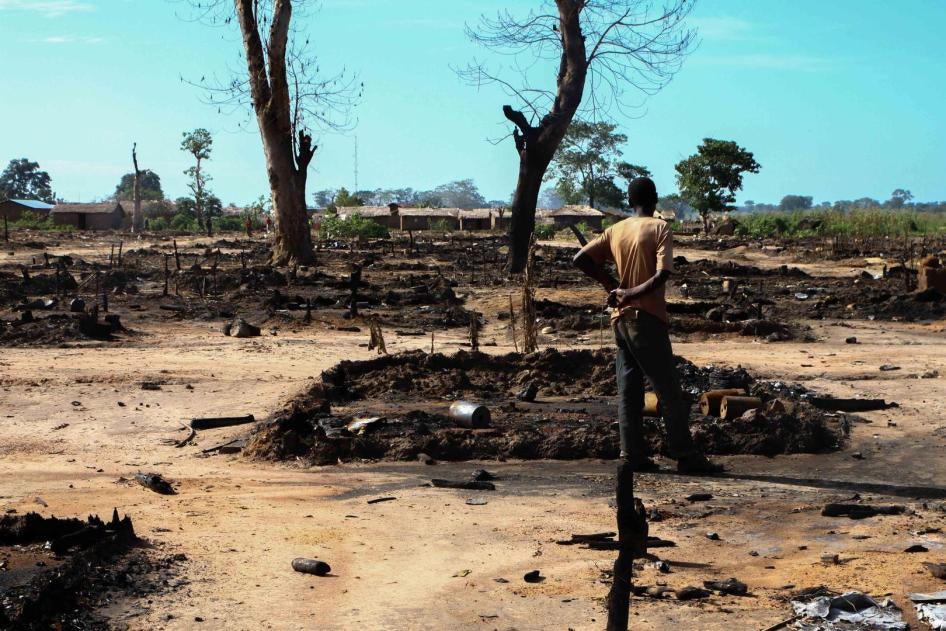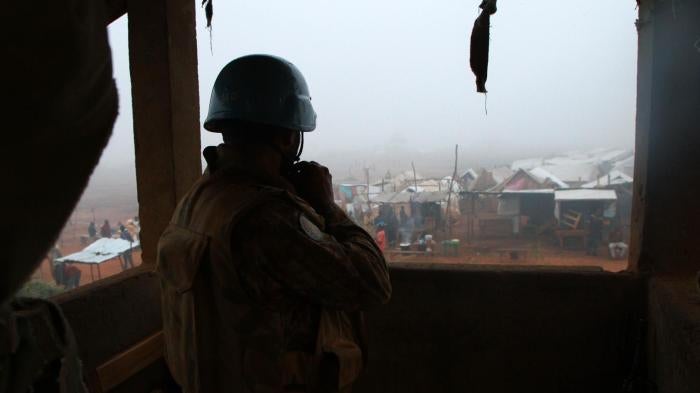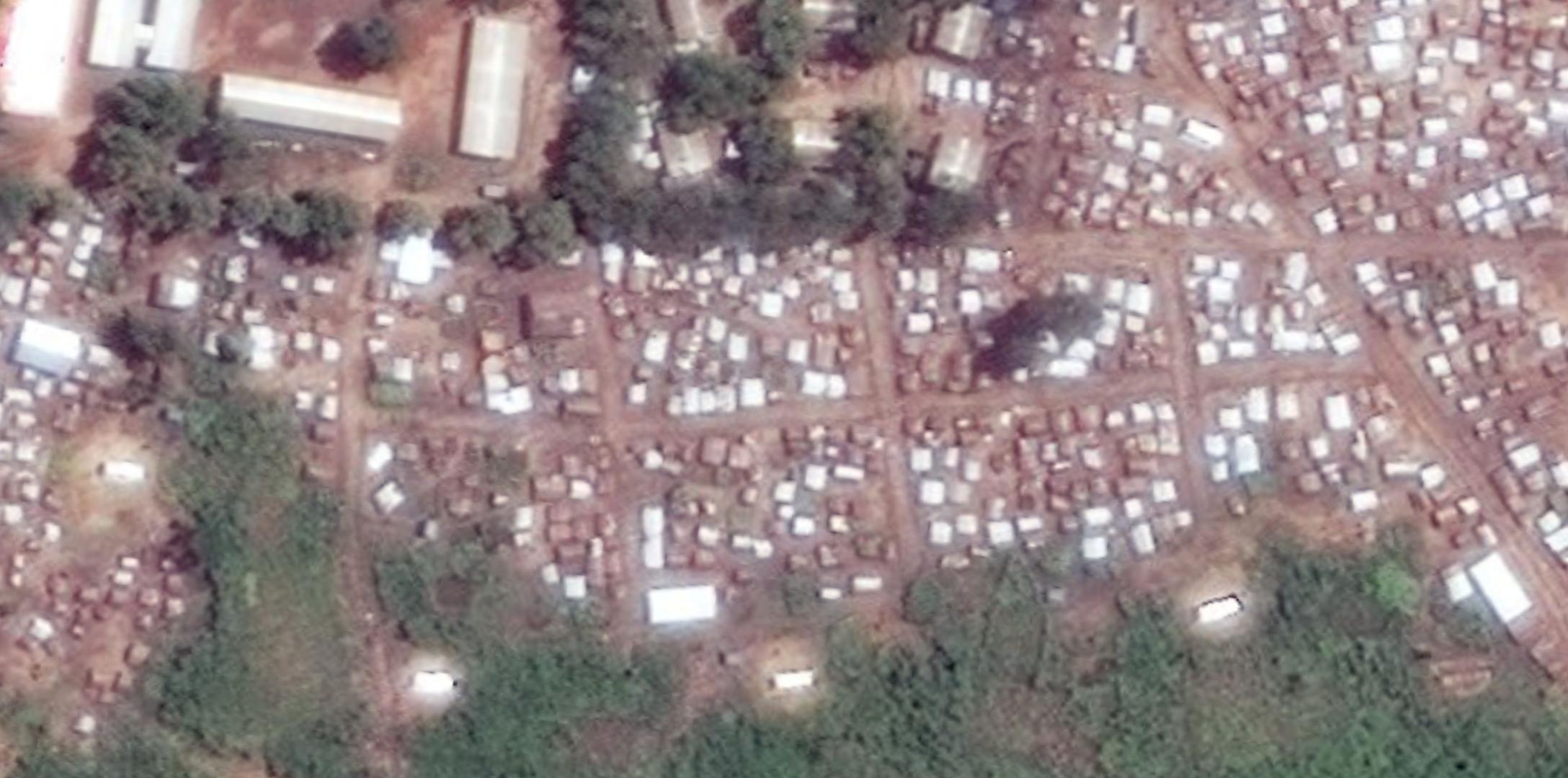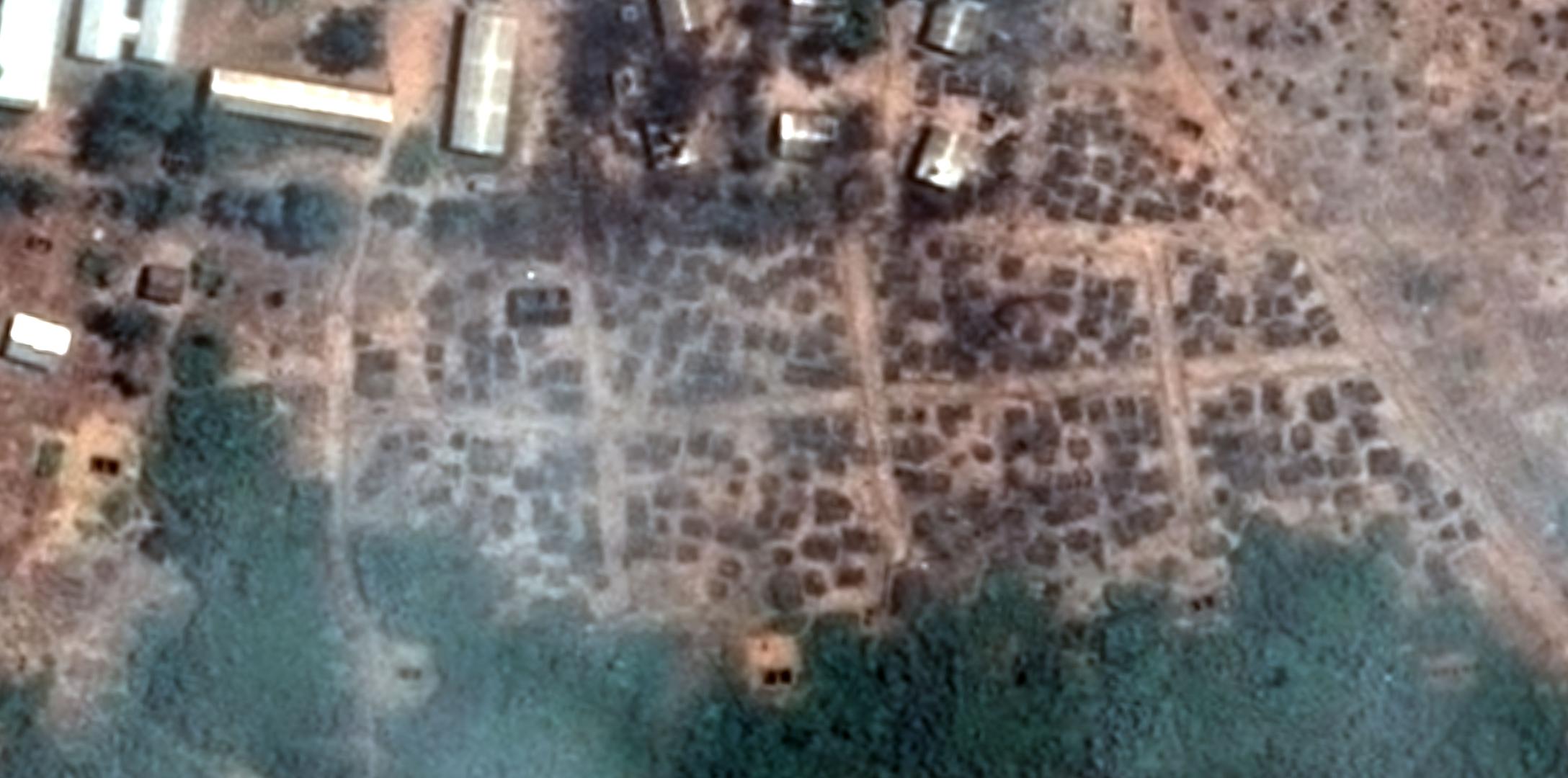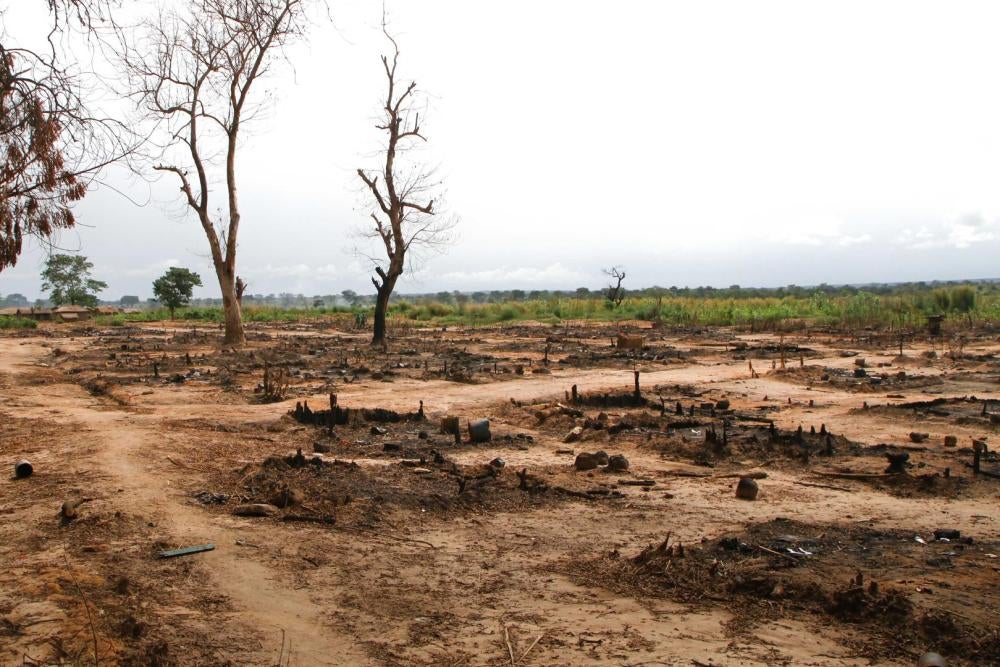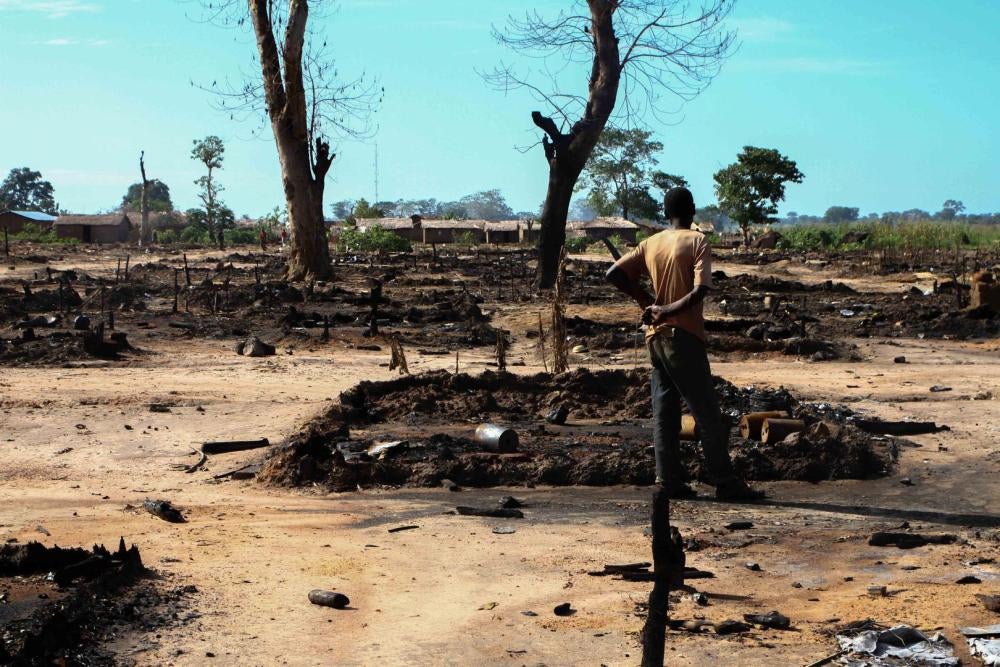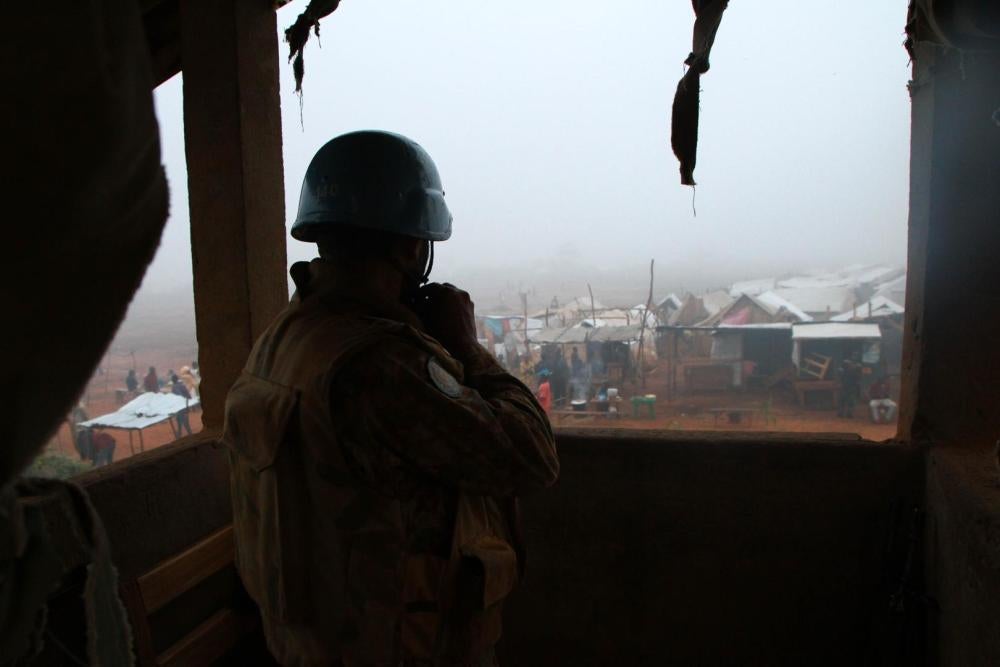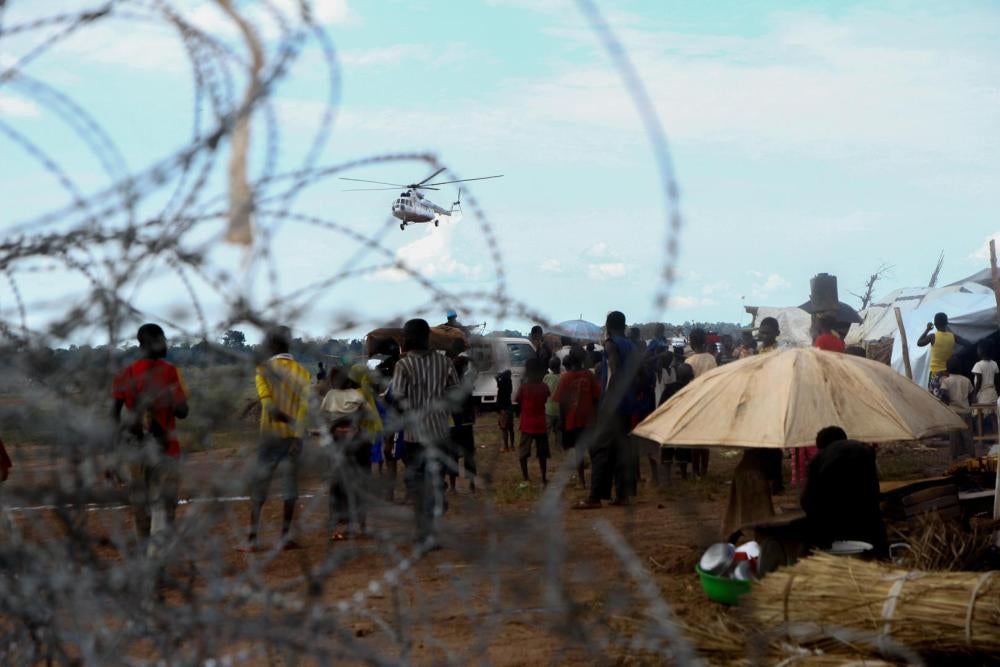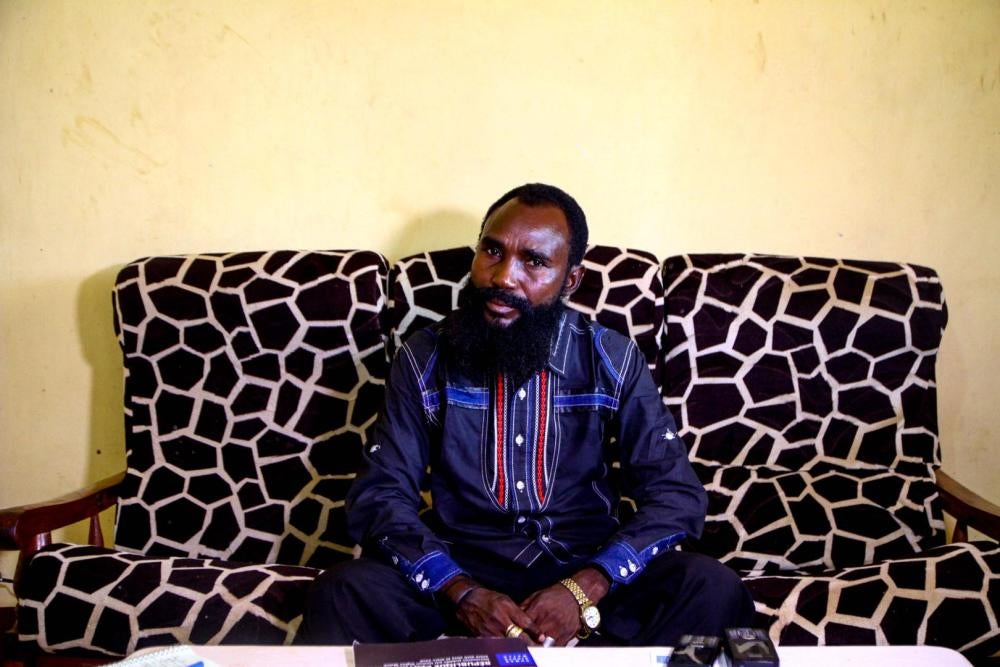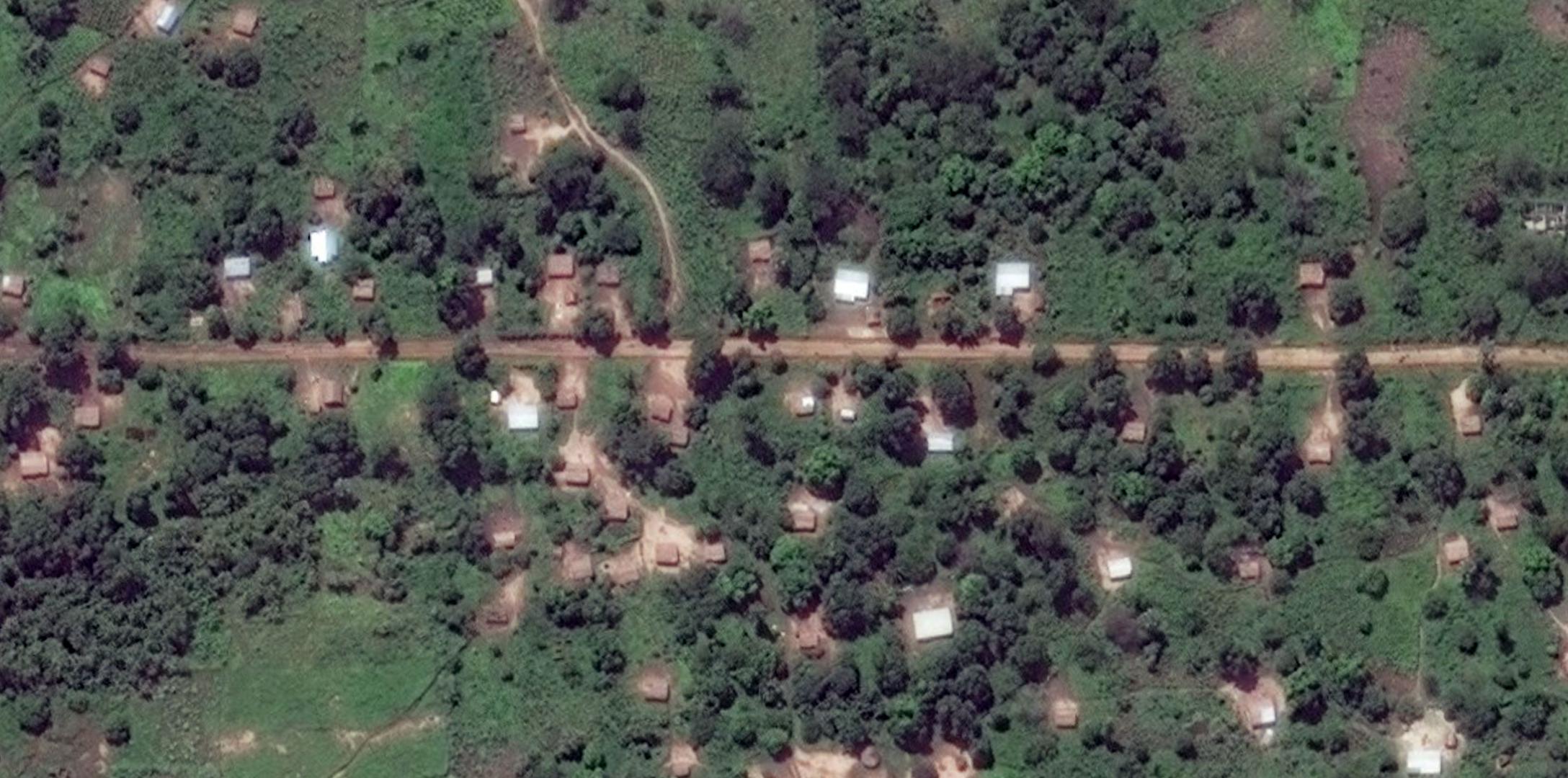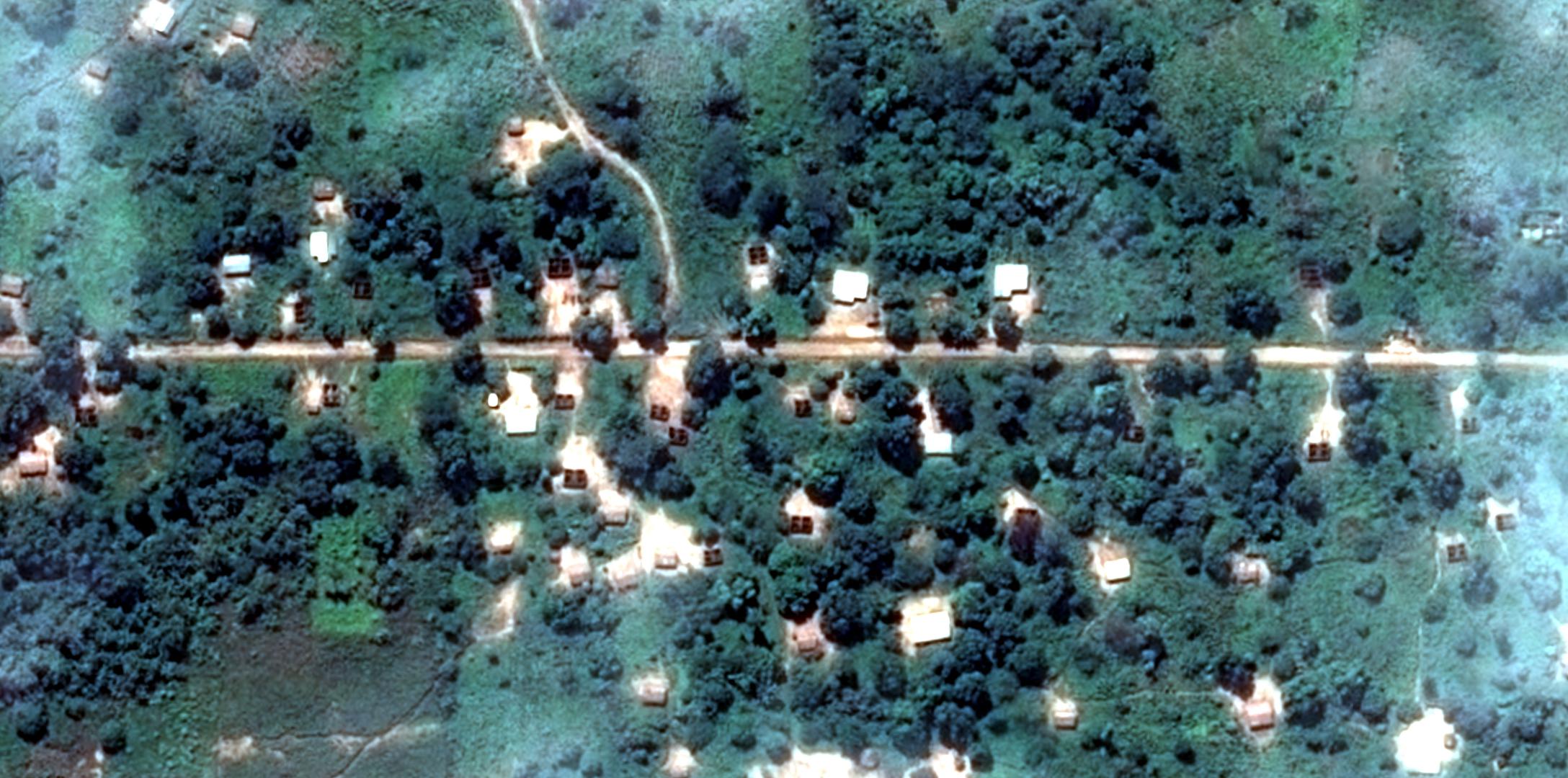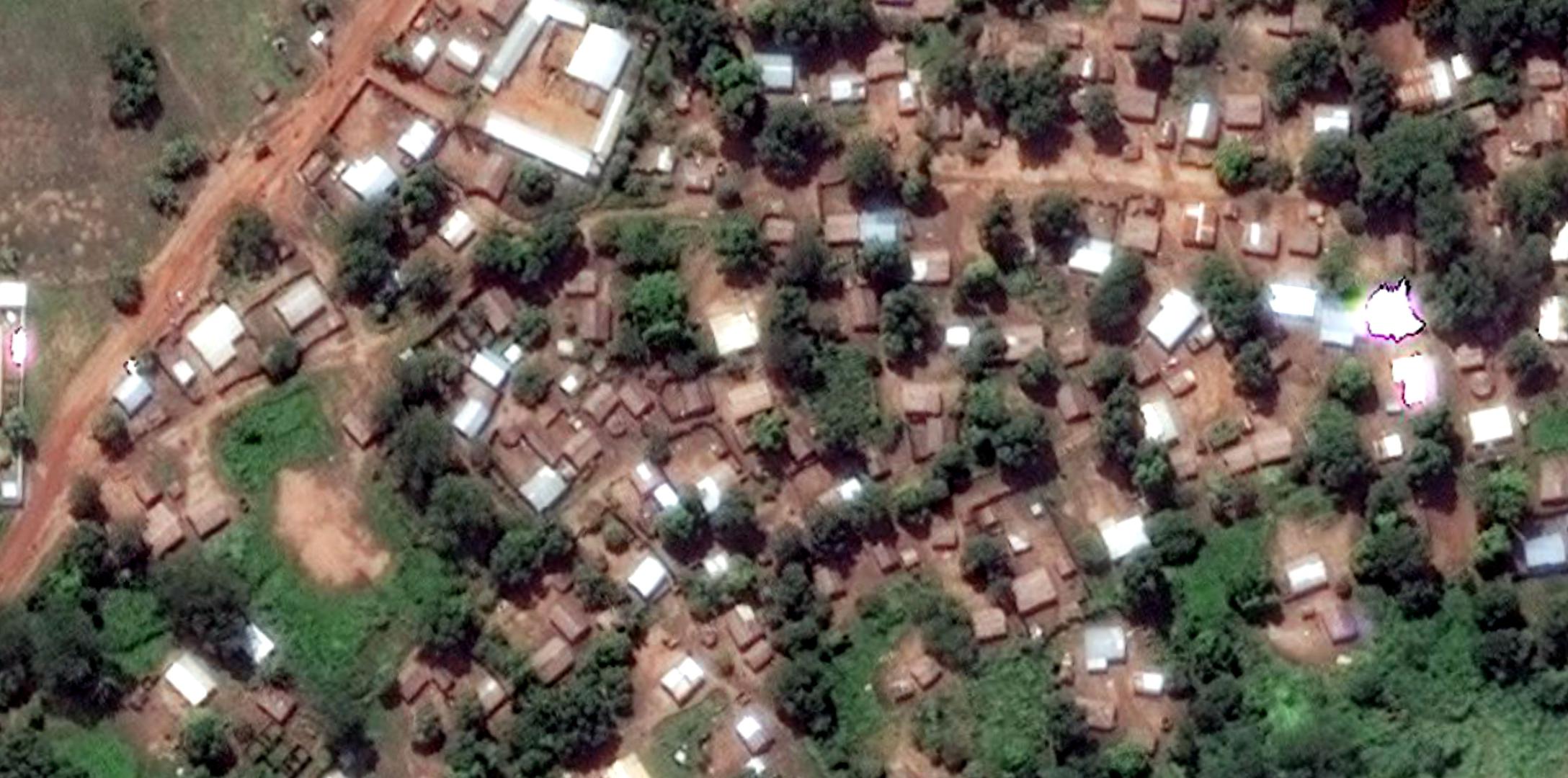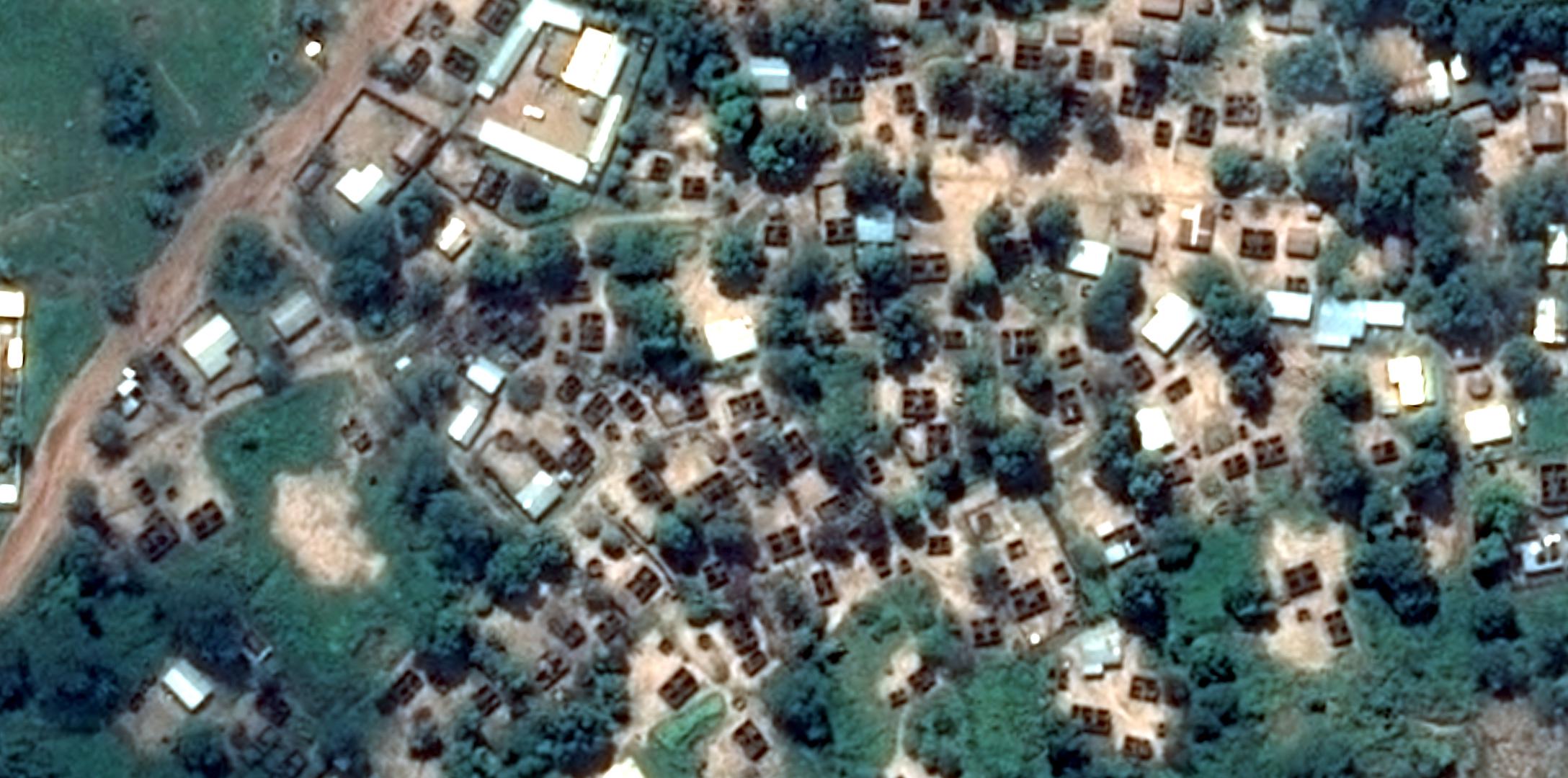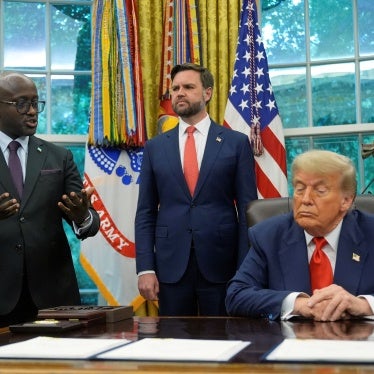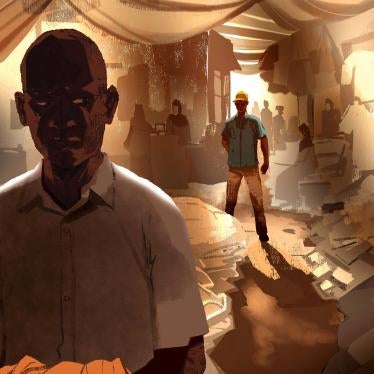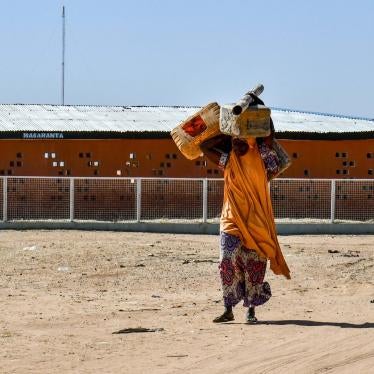(Nairobi) – Seleka rebels killed at least 37 civilians, wounded 57, and forced thousands to flee when they razed a camp for displaced people in the Central African Republic on October 12, 2016. United Nations peacekeepers deployed outside the camp in the town of Kaga-Bandoro failed to halt the attack.
Human Rights Watch interviewed 32 victims and witnesses in Kaga-Bandoro and in the country’s capital, Bangui, between October 14 and 21. They said that the mostly Muslim Seleka forces, possibly with assistance from Muslim civilians, shot, stabbed, or burned to death the civilians, including at least four women, five children, three older people, and four people with disabilities. The casualty numbers are most likely higher because some victims were buried quickly. In addition to field research, Human Rights Watch, using satellite imagery analysis, identified at least 175 destroyed homes in the neighborhoods around the camp and 435 destroyed huts in the camp itself.
The Seleka came on motorcycles and with pickup trucks in the morning. They started to shoot at people in their homes. They found me outside my house and debated whether to kill me or not. As they talked, I watched as some Seleka found a [artisanal] hunting [shot]gun in my neighbor’s home. They assumed he was anti-balaka. He said he was not and offered to pay 200,000 francs [approximately US$340], but they [the Seleka fighters] said it was not enough and they cut his throat.
In the aftermath of the Ndomete attack, MINUSCA increased its presence on the road between the town and Kaga-Bandoro and a MINUSCA police unit was sent to Kaga-Bandoro.
The Violence in Kaga-Bandoro
On October 11 representatives of the town’s Muslim organization marched toward the administrative buildings to deliver a manifesto calling for the re-installation of the Seleka road block at Ndomete, the cessation of checks by the UN at the bridge leading into the Muslim neighborhood, dialogue between the government and armed groups, and the replacement of the Rwandan MINUSCA police unit in town, which they accused of targeting Muslims.
Tensions were high in the Muslim neighborhood when the body of Mahamat Oumar, a Seleka fighter, was discovered early in the morning of October 12 in the TP (Travaux Public) neighborhood. Oumar’s body was transported to the local mosque, where a crowd gathered. Seleka leaders, including the MPC general Mahamat Al Khatim and the FPRC’s Lissane, told Human Rights Watch that they tried without success to calm the growing and agitated crowd.
Between 8 and 9 a.m. fighters from the Muslim side of town crossed over to the non-Muslim side. The first group of about 20 people was armed mostly with knives, machetes, and grenades, witness said. A second group of about 20 people came with Kalashnikov rifles and rocket-propelled grenades, followed by about 20 more men on motorcycles. UN peacekeepers on the bridge were unable to halt the fighters. As soon as the Seleka crossed into the non-Muslim side, they attacked civilians.
An early target was a school where a teacher training course was being held. One participant said:
A group of Seleka fighters came into the courtyard of the school. It was about 15 men. They were armed with knives and grenades. When we saw them we ran to the church. But other Seleka arrived on motos and cut us off, so we ran into the neighborhood. Some [Seleka fighters] were wearing mixed uniforms and civilian’s clothes. They started to shoot directly at us. One teacher, Kango, was sick and he could not keep up, he was captured and stabbed to death. I watched as they killed him. I learned later that another teacher, the director of the training center, was also killed when they found him in the neighborhood.
Some civilians sought safety at the provincial hospital, on the border between the two neighborhoods. However, Seleka fighters killed and seriously wounded people as they tried to enter the building. A 37-year-old man who was injured said:
I wanted to run to the hospital because I knew there were peacekeepers there, but there were Seleka in front of it. One saw me and yelled, “You are anti-balaka.” Just next to me they shot a man running for the hospital. I decided to try to enter the hospital. Two Seleka grabbed me, threw me to the ground and one stabbed me in the chest with a sword. My intestines spilled out, but I was still in front of the hospital, so I put them back in and put pressure on the wound. I staggered to the hospital and found a doctor who did an emergency surgery.
Human Rights Watch interviewed the man three days after these events and saw a large wound on his chest and stomach.
A 43-year-old man said he saw the Seleka kill a sick elderly man: “The Seleka shot him with a homemade gun, but then they walked up to him and finished him off with machetes.”
Another man, 37, watched attackers kill his 40-year-old brother: “He was shot twice while he was running and he fell. Then two men ran up and stabbed him to death in his back with a knife.”
The Seleka fighters targeted suspected anti-balaka, but killed many civilians. A 30-year-old woman from the Gbaya neighborhood interviewed in the hospital said:
They found my 17-year-old son and took him outside and started to hit him with machetes. As they were giving him the final blow I put myself in front of them to save him. I had a baby on my back but they hit me in the arm with the machete anyway and cut it open. I screamed, “He is not anti-balaka, why do you want to kill him?” A fighter said back, “Don’t stop us from killing your people. You killed one of ours, we will kill yours.” They did not hit me with the machete again, but instead they killed my father in law, who was just next to me, with machete blows to his head. He was 60 years old.
The woman showed Human Rights Watch the bandage on her left arm, above the elbow, where she said she was struck. Her son was also recovering in the hospital.
Seleka fighters were able to quickly move past UN peacekeepers who were guarding about 7,000 people in l’Évêché. Some peacekeepers opened fire, killing 12 Seleka fighters.
As soon as they entered the camp, Seleka fighters began shooting at civilians, including women and children, witnesses said.
A woman of about 60 from the nearby village of Ngoulekpa I, who had been living in l’Évêché for three years, said:
When I first heard the shots I went back into my hut to hide. A short time later, I could feel heat coming from other huts that were set ablaze. I went outside and saw my neighbor’s hut burning. I turned around and I saw that mine was burning as well. I started to run to the MINUSCA base, but a young Seleka fighter that I recognized saw me and shot me in the leg. I was helped by others who were fleeing and I was taken to the hospital at the MINUSCA base.
Human Rights Watch interviewed the woman on October 19, and observed what looked like a gunshot wound on her left lower leg. She was receiving medical care from MINUSCA.
A 23-year-old man said he looked for his 17-year-old wife, his two-month-old child and his wife’s three-year-old sister after the attack:
When the attack started I ran to the MINUSCA base hoping to find my family there. When people started to arrive I did not see them so I went down to the camp to look. I saw two dead bodies but it was not them. I found my family near our house… My wife had been shot in the stomach. Our baby had been shot in the head. My wife’s sister looked like she had been shot in the leg. Everything around them was burned and destroyed. We had to bury them in a mass grave.
A 40-year-old widow and mother of six from Ngoulepa II, north of Kaga Bandoro, said she could not take all of her children as she fled:
It seemed like all of the sudden there was shooting everywhere and the kids were running left and right. I just ran and took some of the small kids with me. I learned later that my son Justin Soubanoyo was killed. He was 6 years old. He was shot in the side.
A 15-year-old boy from the Catholic Mission neighborhood said he saw his friend, also 15, get killed: “From my hiding place I saw Vianny running. He was shot in the right arm and fell. A group of five men fell onto him and stabbed him to death. When he was dead they saw me and they chased me, but I ran and hid behind a house. Vianny was a student, he was not anti-balaka.”
People with disabilities were both targeted in the attack and killed in the fires. As the attack started, “Janet,” a resident of the Catholic Mission neighborhood, sought shelter at a neighbor’s home with a local man, Bakoudou Kankandi, who is deaf and does not speak. Seleka fighters soon broke down the door asking if there were men in the home. Janet told them no, she said. “They made us come out of the house and told us to go to the MINUSCA base,” Janet said. “But when they saw Bankoudou, they said, ‘You said there were no men here. Is this not a man?’ I said, ‘No, he is deaf and dumb, he does not understand.’ But they shot him anyway.”
At least three older people with disabilities were left behind at the displacement site and burned to death in the fire, survivors said.
A relative of Gilbert Bingimale, an older man who could not walk, said that the family had to leave Bingimale in the hut so they could save the children. “It was burned down and when we came back later we found him still there. He must have hidden thinking he would be safe. All his skin had burned off.”
A relative of Pauline Pharama, a 70-year-old blind woman, said he could not reach Pharama after the attack started. He said he returned the next morning and found her body charred and eaten by dogs.
After Seleka forces destroyed the l’Évêché camp, the violence continued in areas around Kaga-Bandoro, witnesses said. A 31-year-old woman from Baïko, a neighborhood in the northern part of town, said:
I saw people running from the neighborhood and I was nervous. Around noon I heard motorcycles approaching and I hid in the bush near the house. The Seleka came to our compound. They were in civilian clothes, but they were armed with guns and swords. My niece was there with her five-day old baby, Emmanuel Sadrak. She tried to flee, but a Seleka shot her. The bullet killed her and the baby. My sister ran out of the house and tried to help her, but she was also shot. She is not dead. After they shot them, the Seleka pillaged the house. We tried to bring my niece to the hospital, but she was already dead. We buried the baby there at the house.
Due to security concerns, Human Rights Watch could not reach villages on the roads leading out of Kaga-Bandoro. In the days following the attack, however, displaced people from those villages streamed into the town. Villages along the road to Botto, west of Kaga-Bandoro, were apparently attacked on the afternoon of October 12. A resident of Beguete I, a village along this road, said:
Late in the morning people started to run down the road saying that the Seleka had attacked the town center. A few minutes later some motorcycles carrying Seleka drove by, but they quickly turned around. They then came back with more fighters. They started to shoot at the villages along the road. We heard the shooting and we fled. From a distance I saw them burn my village.
Seleka FPRC fighters had destroyed villages along this road in February 2015, but some residents had rebuilt their homes. Satellite imagery analyzed by Human Rights Watch indicates that at least 75 homes on this road were destroyed in October. “I had just rebuilt my house and only spent five months in it before it was burned down again,” said a newly displaced 47-year-old widow from Zefio, five kilometers from Kaga-Bandoro, “I’m exhausted.”
On October 13, the day after the attack, some people left the makeshift displacement camp at the UN base in Kaga-Bandoro to look for possessions that might have been left behind after the attack and looting in other neighborhoods, but they too were targeted. One woman said she saw a man killed near the abandoned Bomou area:
I heard a moto arrive and I hid in the bush. Three Seleka arrived and saw a man. They called him over saying, “We won’t hurt you.” So he approached them. They spoke for a moment and I heard the man yell, “Don’t kill me!” But a Seleka pulled out a knife and stabbed him in the neck. I crawled away, but I turned around and saw the man’s body at a distance.
Seleka Response
In a meeting with Human Rights Watch, General Al Khatim, the military head of the MPC, insisted that Seleka fighters did not participate in the October 12 attack, blaming armed Muslim civilians from the town instead. He accused MINUSCA of failing to protect civilians.
Lissane, the political director of the FPRC, also said that no FPRC fighters had participated in the attack. He justified the assault, however, saying that anti-balaka fighters had used the camp as a base. He maintained the camp was attacked because anti-balaka fighters had started a fight outside the camp with members of the Muslim community. While anti-balaka were living around the l’Évêché camp, they were armed with machetes, a few artisanal hunting guns and a handful of grenades, according to witnesses and camp residents. No one else interviewed by Human Rights Watch confirmed Lissane’s version of events.
The attack at l’Évêché has increased tensions and mistrust between people in Kaga-Bandoro and MINSUCA forces. Human Rights Watch heard numerous rumors in the town that Pakistani peacekeepers had supplied the Seleka with guns, munitions, and support before and during the attack, but found no evidence to support this claim.
In an interview with local media, the minister of public security, interior and territorial administration, Jean-Serge Bokassa, seemed to encourage negative attitudes toward the Pakistanis. “What is the role of the Pakistani contingent in Kaga-Bandoro?” he said on October 15. “Their connivance with armed groups has lasted too long.”
Background: A Legacy of Displacement Camp Attacks
Saint Notre Dam Parish – Bangui
On May 28, 2014, a group of armed civilians, possibly mixed with Seleka fighters, attacked the Notre Dam Parish in the Fatima neighborhood of Bangui, killing 17 people. The parish had served as a displaced camp for thousands of residents displaced from Bangui since a major offensive launched by the anti-balaka on the capital on December 5, 2013. At the time, local camp officials told Human Rights Watch that roughly 5,800 people lived in the camp on the day of the attack.
The attack occurred just after a heated street battle between the anti-balaka and Muslim self-defense groups. Muslim militiamen told Human Rights Watch they believed that some of the anti-balaka had sought shelter among the displaced people at the church. The 17 deaths recorded by Human Rights Watch were all civilians, including women and children.
Saint Joseph’s Parish – Bambari
In June 2014 a deadly cycle of sectarian violence escalated in the Ouaka Province, resulting in at least 62 deaths between June 9 and 23. The attacks, by both Seleka and anti-balaka fighters, were retaliatory in nature, indicating a growing cycle of tit-for-tat revenge killings between the communities. Most of the victims were men who were chopped to death by machetes. The violence culminated with a brutal attack on July 7 by suspected Seleka rebels on thousands of displaced people taking shelter at Bambari’s Saint Joseph’s Parish and the adjacent Bishop’s residence. The attack killed at least 27 people. The Seleka fighters were under the command of General Ali Darassa, the head of a group that would later emerge as Union for Peace in the Central African Republic (l'Union pour la Paix en Centrafrique, UPC).
Ngakobo/SUCAF – Ngakobo
On December 3, 2015, Seleka UPC fighters attacked a displacement camp at Ngakobo, approximately 60 kilometers from Bambari, which housed an estimated 4,500 displaced people, killing eight. Ngakobo was attacked again on October 15, 2016 by armed men, killing 13 civilians. UPC representatives denied to international media that its fighters were responsible for the attack. Human Rights Watch was not able to verify the circumstances of the attack or who was responsible for the more recent attack.
